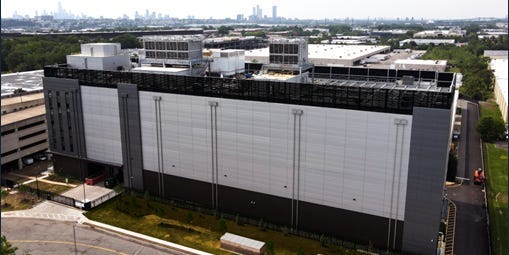Only in the US are data centers the main driver of surging global power demand, a new report from consulting firm McKinsey & Company says.
Industrial development is on pace to double global electricity demand by 2050, according to McKinsey & Company’s Global Energy Perspective 2025 report. The race to build artificial intelligence data centers is a key driver of that demand in Western Europe, China, and North America.
“After analyzing a detailed pipeline of data center projects, we predict an average global growth rate of 17% per year in data-center-related power demand between 2022 and 2030,” the report states.
In the US, that average growth rate jumps to 25%.
By 2030, data centers could account for more than 14% of the US’s total power demand, even with gains in energy efficiency from new chips and sustainable data center infrastructure. That rate is more than triple the amount of power US data centers used in 2023.
Big Tech companies are building massive new data center campuses across the country and are continuing to announce new projects. Utilities are projecting 60 gigawatts — enough electricity to power six cities — of new power demand will come from data centers alone through the end of the decade.
From Virginia to Louisiana and Arizona, the major public utilities are seeking regulatory approval to build new power plants and transmission lines. These projects often run into the billions of dollars, and have raised questions over how much of the costs should be passed on to residential and small business ratepayers.
Related stories
In August, regulators approved Entergy Louisiana’s plans to recover $5 billion in construction costs for three new natural gas plants needed to serve a Meta data center under construction in the state.
Some companies are taking matters into their own hands. The Stargate campus in Abilene, Texas — home to an Oracle data center that will house a massive cluster of OpenAI’s servers — is being powered by an on-site natural gas plant.
The McKinsey report notes that amid rising electricity demand, fossil fuels are likely to remain a large part of the energy mix through 2050.
Nascent low-carbon energy technologies such as carbon capture and hydrogen power are taking longer than expected to mature, and are likely to remain a small part of the market over the next few decades, the report states.


